Imagine a world with zero travel. It’s not that hard; the COVID-19 pandemic made a travel-less world our harsh reality.
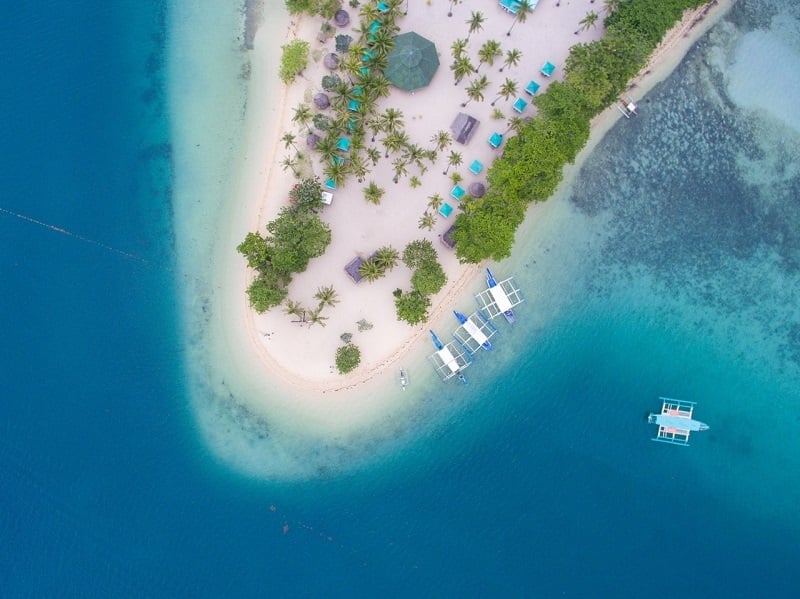
Imagine a world without Palawan, one of the many island paradises of the Philippine archipelago. | Image credit: Ferdie Drone
Now, imagine a world so ruined from our wasteful ways, we won’t have any spots to travel to in the first place. Take a second to swallow that hard pill, and before you write off sustainable tourism as something that isn’t ‘sexy’ or Instagrammable enough for your feed, let us be the first ones to burst your bubble; there’s nothing sexy (or Instagrammable!) about polluted waters, dying rainforests, and fatigued tourist spots either.
Just as we diligently carried out COVID-19 travel protocols to help the world overcome the pandemic; we should also help sustainable tourism flourish to bring about the Earth’s healing as we make our way around it.
Take it from the Philippines’ Department of Tourism. They put it perfectly in their sustainable tourism campaign entitled Save Our Spots (SOS). Its pilot video boldly begins with, “This fun won’t last… unless we help out” — a battle cry quite apt for the archipelago’s tourism tagline, #ItsMoreFunInThePhilippines!
Before you book that epic Philippine trip to be part of the fun, why not heed Mother Earth’s SOS? Make that first step towards responsible travel by getting to the end of this piece. Sustainable tourism is attainable — and we can all pitch in by learning these dos and don’ts!
On saving resources
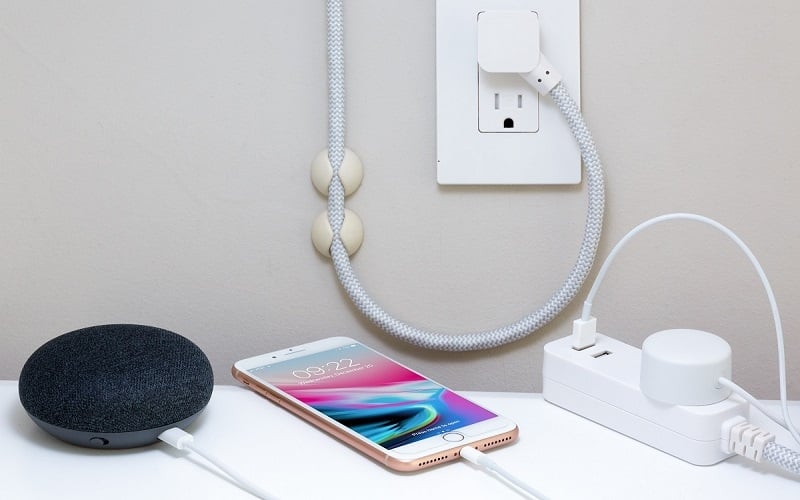
Image credit: Thomas Kolnowski
1. Switch off and unplug
We run on the Earth’s resources all day, every day, 24/7. That phone you’re charging to post on social media; air-conditioning and heat; water that’s running every time you wash your hands; the fuel that’s letting you go places — you get the idea. Can you picture the world once we’ve dried it all out?
Our planet has withstood millions of years providing for its inhabitants and it has always powered through… until now. We’re depleting the Earth’s resources faster than it can recover. Scientists warn that it will take at least 10 million years for the planet to undo the damage done by humans. So what are you doing about it?
Do: Switch off lights and appliances when not in use. Unplug chargers and adapters. Limit water consumption. Don’t let water run needlessly and never leave gadgets charging overnight. You’re wasting power — and you’ll end up destroying your phone/tablet/laptop/camera!
2. Walk, hike, bike
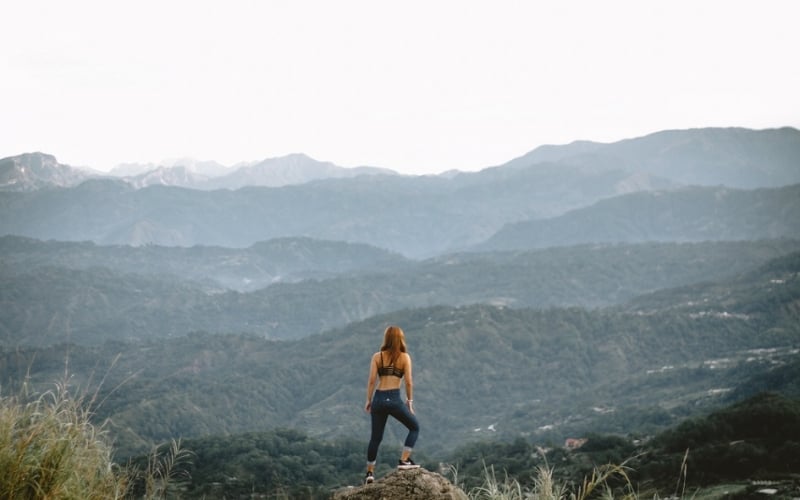
Sunrise views at Mt. Yangbew in La Trinidad, Benguet — a neigbouring destination of Baguio City.丨Image credit: Ivan Torres
In the same vein, you can lessen your carbon footprint by getting around on your own. And by ‘on your own’, we mean sans any mode of fuel-powered transportation. Consider that every flight you board and every car you ride releases emissions that contribute to climate change, but we can’t do without aeroplanes and road trips either. That’s quite the conundrum, isn’t it?
Luckily for you, the Philippines brims with natural wonders you can trek, hike, and swim in! When the sun’s out, even cities like Manila, Cebu, and Iloilo are very walkable. Other attractions like Intramuros and Calle Real are also best seen on foot. The best part? It’s healthy! Moving around gets your heart pumping and lets endorphins do their thing. Plus, you’re less likely to catch a bug in airy, open spaces compared to crowded, cramped indoors. P.S. Don’t forget to wear your mask and face shield!
Do: Walk, hike, bike, swim, run, surf! Use those limbs to go places! It’s healthy and green, plus the endorphins from a quick cardio session are bound to get you into a good mood. Don’t sweat short distances — take a leisurely stroll. Go on walking tours when you can. Think of it this way: Every step you take towards your destination is a step towards sustainable tourism!
3. Finish your food
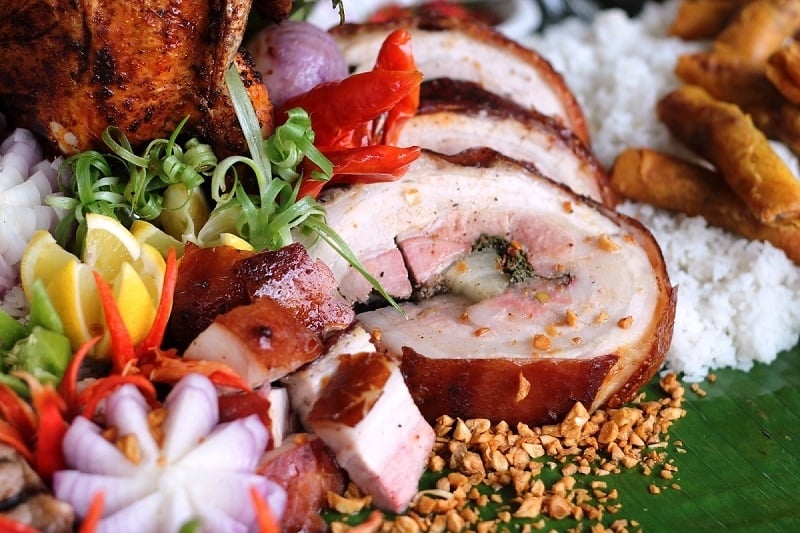
If you want to taste the Philippines’ best lechon, head to Cebu. | Image credit: kerslyn
Blessed with fertile soil and vast fields upon which premium crops grow, the Philippines is a highly agricultural country. We Filipinos (and foreigners who visit!) love our fluffy grains, our tropical fruits, and fresh vegetables!
Also read: Cure Post-Lockdown Blues By Touring Idyllic Farms in the Philippines
The archipelago also boasts of bodies of water that give locals and tourists alike access to the ocean’s bounty. You can imagine how much Filipinos love food in general. We take great pride in the hard work that our farmers put into feeding the nation — so please don’t let these tasty morsels go to waste.
Do: Finish what you put on your plate. Generally speaking, the average Filipino serving of food comes in smaller portions. When we say it’s good for just one person, that’s most likely the case. Don’t over-order from the get-go. If you want more, you can easily call for another serving! Remember, sustainable tourism also covers keeping the food industry’s waste to a minimum. Let’s pitch in by savouring every last bite!
On eliminating litter
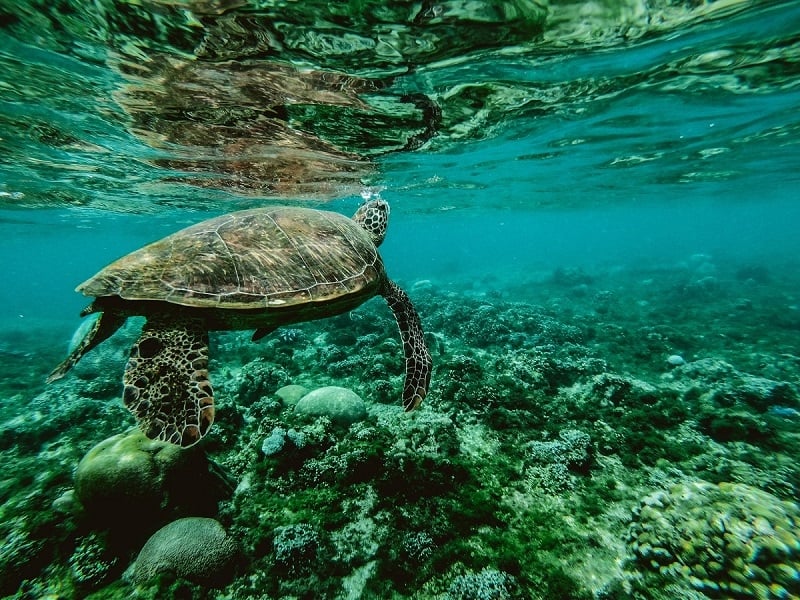
Much of our litter makes its way to the sea, especially when we’re on a tropical getaway. Be a responsible tourist and throw your garbage in the proper bins. This sea turtle in Apo Island, Negros Oriental will thank you! | Image credit: Belle Co
4. Go plastic-free
You should know that several places in the Philippines are proudly plastic-free! There’s Boracay in Aklan, Baguio in Benguet, Pilar in Surigao del Norte, Los Baños in Laguna, and El Nido in Palawan. We also have our first plastic-free airport, the Mactan-Cebu International Airport — which has garnered international awards since it opened in 2018.
Even when a city or island hasn’t been declared plastic-free, it’s common to see locals lug around their tumblers for a coffee run. That said, when you travel to the Philippines, make sure you have your ‘reusables’ with you.
Do: Invest in refillable tumblers, cutlery, and metal straws. Basically, anything you can reuse — and make sure you don’t lose them so you won’t have to keep on repurchasing these items! Moreover, refuse single-use plastic politely when it’s offered to you. That way, you can let establishments know that you’re making a stand, too.
5. Pick paperless — go digital with apps and user-friendly websites
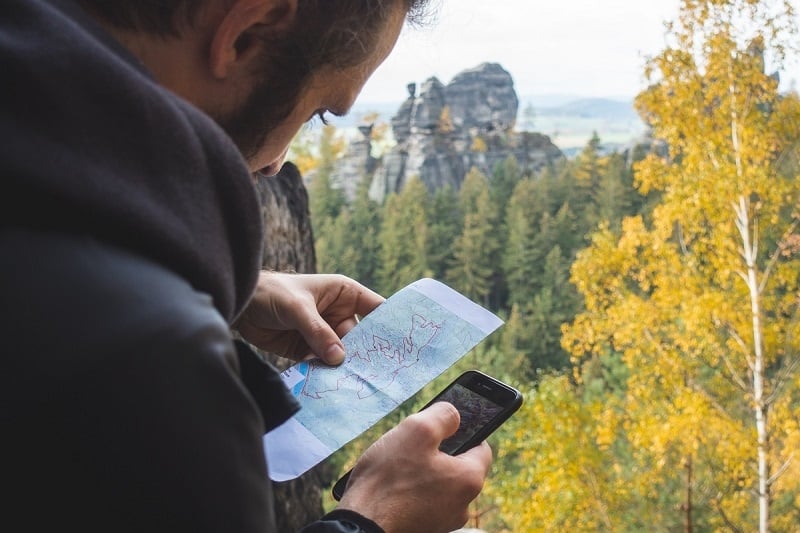
Image credit: Patrick Schöpflin
As you can see, some of the commandments on this list are self-explanatory. These are the eco-friendly reminders that we’ve heard again and again, but never really follow. It’s time we correct that! There was an era when travelling meant printing out tons of documents, guides, lists, and maps on paper — but times are changing. Almost everyone has a phone these days, so utilise its advanced uses.
Do: Help save trees and rainforests by going paperless in your travels! Need a map? Find one online; we recommend Google Maps or Maps.me. Have to keep your travel documents close? Use your Google drive, cloud, or whatever personal e-storage you prefer! There are many helpful travel-related apps you can download, so don’t miss out on their awesome features. Last but not least, don’t print your boarding pass; simply check-in online and download it (or take a screenshot). It will save you time and effort, too.
6. Clean as you go
Here’s another no-brainer. Say it with me, CLAYGO. That’s “Clean As You Go” and it simply means clean up after yourself as any civilised, decent human being should!
Do: Keep your rubbish with you (we’re pretty sure you have bags and pockets) if a trash receptacle isn’t anywhere in sight. Don’t just throw it out when no one’s looking. That’s just plain rude. Looking to level-up in the name of sustainable tourism? Clean up after others when you can, too! That can be your kind deed for the day.
On sustainable tourism & eco-forward habits
7. Wash your hands thoroughly, frequently, efficiently

In the midst of a pandemic, safe travel practices also make for more sustainable tourism. We’ve been told time and time again that the first way to combat the spread of COVID-19 is to wash our hands. You already know how to do it thoroughly: all sides and crannies, with soap and water for at least 20 seconds. We also know to wash our hands frequently, as COVID-19 can stay on surfaces longer than we think.
But we’re here to remind you to wash your hands in an eco-efficient manner, too. How? Turn off the tap when you aren’t rinsing or wetting your hands. Avoid using a tissue to dry your hands; that type of rubbish just goes straight into the bin after just one use.
Do: Save water. Don’t let the precious liquid run unnecessarily when not in use. Did you know that in some parts of the world, water is scarce? The fact that you’re able to have clean, running water anywhere in the Philippines is already a blessing! Don’t take it for granted. Use an air dryer when available or carry a personal quick-dry towel or hanky, which you can wash and disinfect at the end of the day.
8. Opt for cloth masks and reusable PPE
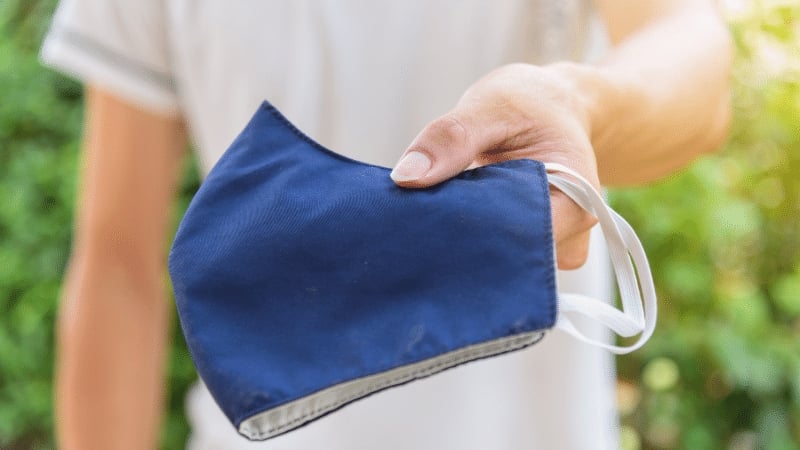
Anything reasonably reusable is the better choice, and yes, it also applies to the better normal. Why “reasonably reusable”? Because we acknowledge that not all personal protective equipment (PPE, like single-use medical masks) can be reused. When you can, go for more eco-friendly options that protect you just as well.
For example, a more environmentally sound alternative to medical, single-use masks is a cloth mask. If you’re keen on wearing PPE from head to toe, we’re sure that some jumpsuit, tracksuit, and jacket types will be as good as new after a good tumble in the washer! Even face shields may be reused; just clean them by washing, wiping with disinfecting alcohol, and even exposing to germ-killing UV light if possible.
9. Prioritise paperless payments & health declarations
If you’ll notice, much of these tips are just repetitions of points raised earlier. But we’re being more specific for good measure! Remember #5 — pick paperless? This doesn’t only apply to travel apps and websites; payment facilities and COVID-19 health declarations now have digital versions, too!
Do: Instead of filling out a form with a pen, ask if establishments have online forms and QR codes. Let’s put our mobile phones to even better use; they help us adhere to contactless transactions and protocols. What’s more, you help consume less paper and save trees! The same goes for cashless payments that give you e-receipts instead of printed versions.
10. Reach for refillable disinfectants
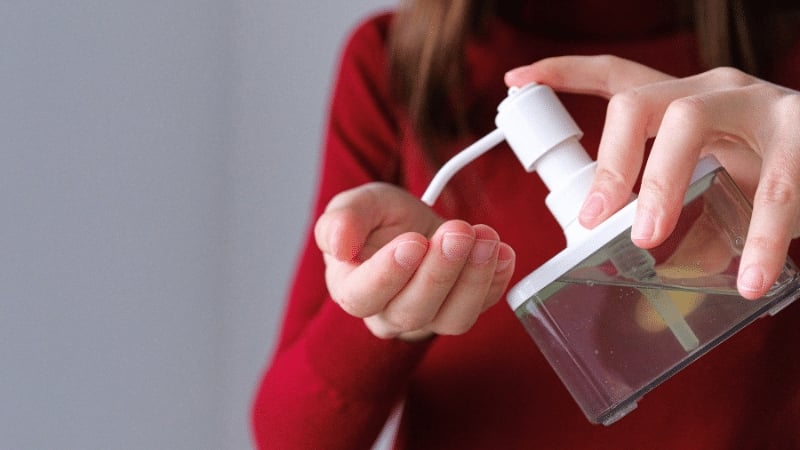
You already know to reuse, reduce, and recycle. But don’t forget to refill! You heard that right. Since we’re consuming more disinfecting alcohol and gels during the pandemic, try to go for refillable products. That way, you won’t have to discard plastic bottles with every new purchase.
Do: Along the lines of reusing, keep perfectly working plastic bottles. Refill them with rubbing alcohol or gel disinfectant. This is a good alternative to using wet wipes, too — those have plastic particles woven into the sheets (unless they indicate otherwise). Top travel tip: When your hotel has a refilling station for disinfectants, use them! Don’t just keep buying small bottles of sanitizers that you’ll just throw out after your trip.
11. Trust in travel bubbles
Why are travel bubbles effective vehicles for sustainable tourism post-quarantine?
First and foremost, they’re safe, which means you can have fun longer! Travel bubbles are normally areas in the world lauded for superb COVID-19 management, which is why they make for safer getaways post-lockdown. Know that the Philippines recently secured a “Safe Travels” stamp from the World Travel & Tourism Council (WTTC). WTTC only grants this to destinations that have enforced strict COVID-19 protocols as a step towards successful and sustainable tourism reopenings.
Note: The Philippines has yet to open its borders to foreign travellers, but has successfully kickstarted domestic tourism. Local travel requirements (such as a negative RT-PCR test) are now determined by the local government unit of your destination, your accommodations, and your airline. Be sure to check with them before your trip; gather all the requirements needed for fuss-free entry. Furthermore, quarantine won’t be required unless a local tourist displays flu-like symptoms.
On top of this, the country has already created travel bubbles like Reef and Ridge Corridor, which takes would-be travellers through a touring loop that includes Baguio, La Union, Pangasinan, Ilocos Norte, and Ilocos Sur. What to expect? COVID-19 protocols that make you feel secure, plus the following travel experiences: mountain views in chilly Baguio; seaside getaways in La Union and Pangasinan; and cultural immersions in Ilocos Norte and Sur.
There’s also the Bohol Bubble that comes with its seal of COVID-preparedness called “Ultimate Bohol Experience” (UBE). Another example? This Palawan travel bubble package brings you to an eco-resort in the sunny municipality of Culion. It comes with airfare, accommodations, and vouchers that will let you enjoy the island resort’s various amenities.
Moreover, Philippine travel bubbles allow you to take on multiple travel experiences without the hassle of connecting flights!
Do: Support travel bubbles to support various provinces through their interlinked tourism reboot initiatives. Get around by land in a socially distanced manner, and explore worry-free!
On wildlife and your environmental impact
12. Behave responsibly around wildlife
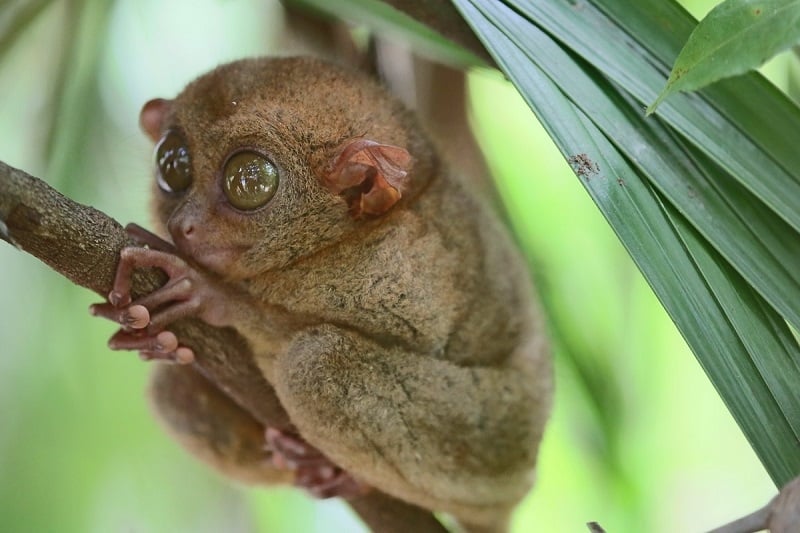
Bohol isn’t only known for its Chocolate Hills; it’s also the home of this endemic species of tarsier that can only be found in the Philippines! | Image credit: Leocadio Sebastian
Zoos are nice. Taking photos with cuddly creatures that would otherwise shy away from humans in the wild is indeed a novel travel experience. Swimming with gargantuan marine life is bucket-list-worthy for many folks. However, did you ever stop to think if the way you’re behaving around wildlife is doing it more harm than good?
Did you know that some animals react adversely to chemicals found in our lotions, sunblock, and insect repellant when we pet them? Other critters are nocturnal — meaning they’re awake at night and would appreciate silence even during your daytime tours.
Animals get sick; if you’ve caught a bug, they can catch it, too. When we’re told not to feed the animals, it’s for the wildlife’s own good.
As responsible tourists, we should learn the best ways to observe and interact with wildlife without causing them stress or putting them at risk.
Do: Read up about the critters you’re interacting with so you know how to respect them whether in the wild or in captivity. It’s a plus if the wildlife attraction you’re joining upholds conservation and animal welfare. Wildlife activities are meant to educate the public about our custodianship of the Earth and all its creatures, big or small. Don’t waste the chance to know better! Lastly, if you’re feeling unwell, sit your trip out or postpone it to a later date. Humans and wildlife alike will thank you for your consideration.
13. Make a stand against plant poaching

The waling-waling, an orchid species endemic to the Philippines.
COVID-19 isn’t the only virus making its rounds. In the Philippines, there’s an ongoing “plantdemic” — a sickness called plant poaching. As cities remained in community quarantine, people started to get restless; they pined for the great outdoors or simply looked to new hobbies. One of them was becoming a plant parent, and for this, nature paid the price dearly.
News of poachers scouring protected Philippine forests for flora that would sell for thousands of pesos surfaced. If you’re a wandering green thumb and on your travels around the country, you’re offered a unique specimen that seems unethically sourced, politely refuse. It’s the right thing to do.
Do: Break the cycle — only participate in legal and ethical flora trade. Don’t snap up a pretty plant just because it was such a great deal. Don’t fall victim to poachers who prey on clueless plant enthusiasts, either. If you get caught with a protected species, you’ll get penalised!
14. Bring eco-friendly personal care products

Game to see the Philippines’ haring ibon or ‘king of all birds’? Book a trip to Davao, where you’ll find the Philippine Eagle Center. | Image credit: The Wandering Angel
In line with #12, if you already know which chemicals to avoid slathering on your skin when you’re interacting with wildlife, then do something about it.
Do: Apply reef-safe sunblock when you’re in need of some SPF. Choose DEET-free insect repellent, because this chemical is highly toxic to animals. Keep the same considerations in mind when shopping for other personal care products and toiletries.
15. Leave nature be
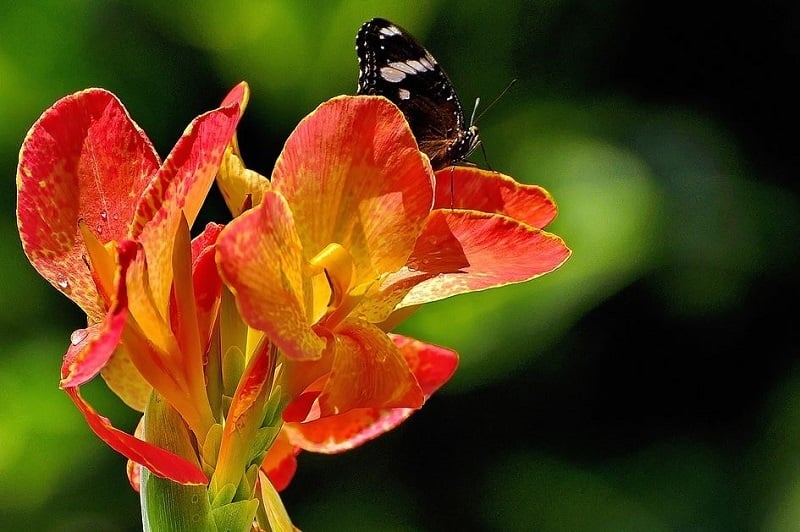
The Philippines is home to countless tropical flora and fauna.. | Image credit: georgeparisph
You know that popular saying, “Take nothing but photos, leave nothing but footprints, kill nothing but time”? That’s exactly what leaving nature alone is all about. Being surrounded by lush foliage and witnessing breathtaking natural beauties is such a privilege — and one that we often take for granted. So when you’re in the great outdoors, you know the drill.
Do: Stick to marked nature paths and leave everything how you found it. Don’t pick flowers, don’t pet wildlife, and don’t disturb the habitat. You’re not only on tour; you’re entering someone else’s home. How would you feel if a bunch of strangers barged into your house, made a ruckus, and took apart your furniture?
On loving local
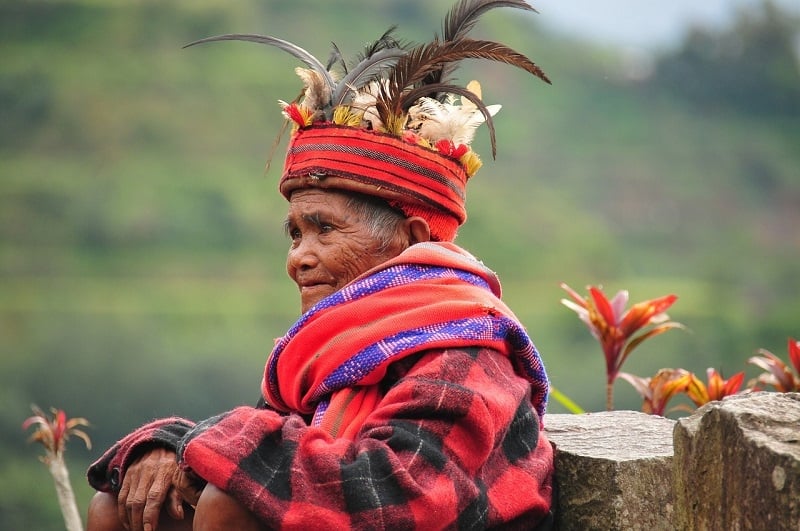
An Ifugao local dressed in traditional clothing made of colourful local weaves.
16. Respect culture, customs & heritage
We always say this because it’s true: Travel opens our eyes to realities other than our own. The places you’re visiting and the culture you’re experiencing in someplace new are markers of people’s identity. They embody rich heritage and winding histories, so be sure to respect them. When you’re given the chance to take a peek into local customs and beliefs, treasure the exchange.
The world is wide, and with more than 7,600 islands, the Philippines’ regions boast both shared characteristics and unique heritage.
Do: Practise cultural tolerance and cultural sensitivity. If you’re immersing in a community, do everything with permission. It won’t hurt to ask if you can snap that photo or touch an heirloom. There is deep pride of place in the sights you’re seeing; don’t downplay those significances just because they aren’t yours to hold important.
17. Patronise local businesses when you get the chance
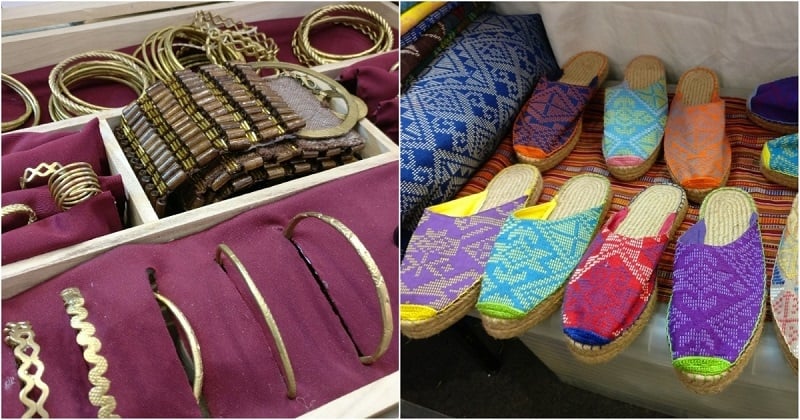
Brass accessories made by artisans of South Cotabato (left); Footwear made from colourful Mindanao textiles (right) | Image credit: Alyosha Robillos
While on the topic of a tourism restart, let us remind you that sustainable tourism covers local livelihoods, too.
When you support local enterprises, you help domestic economies thrive. Aside from taking care of the environment, we should also look out for its stewards. We always say that “people make the place”, and that’s something you’ll certainly feel during your stay in the Philippines.
Buy products from the locals. Get to know the farmer that put food on your table. Eat in proudly Pinoy restaurants. Stay in a Filipino-owned hotel that follows COVID-19 protocols. The Philippines overflows with unique, home-grown souvenirs — and we do love it when visitors take home something that is truly #TatakPinoy!
Do: #SupportLocal whenever you can. You’re in the Philippines, after all. Make your experience even more authentic by supporting enterprises grown and based in the country.
On responsible travel habits
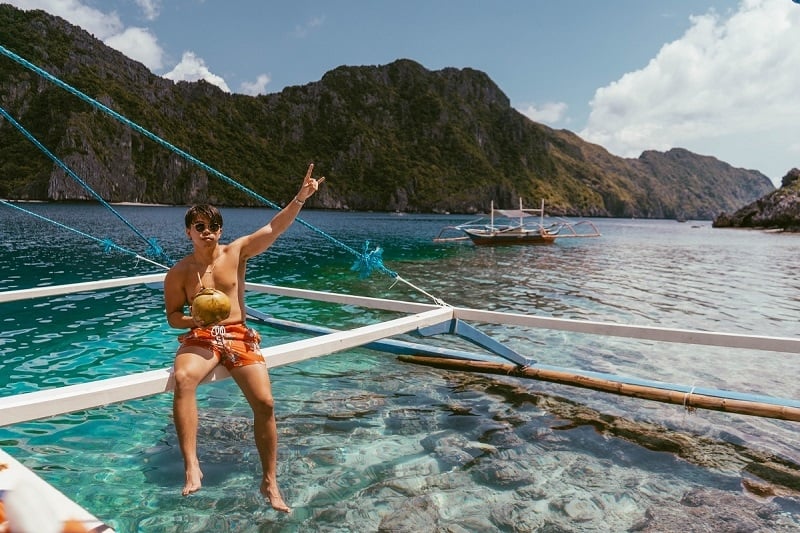
No one is immune to the charm of El Nido in Palawan. Just make sure to bring your bamboo or metal straws like our friend in the photo — because this paradise is plastic-free! | Image credit: Rona Loa
18. Follow site rules
Rules are set for a reason. Tourism is regulated so that we get to enjoy the world at present, all while preserving it for future generations. Follow curfews and dress codes; don’t feed or pet the animals when you’re not supposed to; stay on marked paths; hold COVID-19 safety protocols in high regard! If there are rules where you’re staying or touring, make sure to follow them.
Do: Acquaint yourself with any sight’s regulations before entering — that’s non-negotiable when it comes to upholding sustainable tourism. Don’t think just because no one’s watching, you can get away with breaking a rule or two. Often, rules are there to keep you safe, too.
19. Know your destination even before you get there
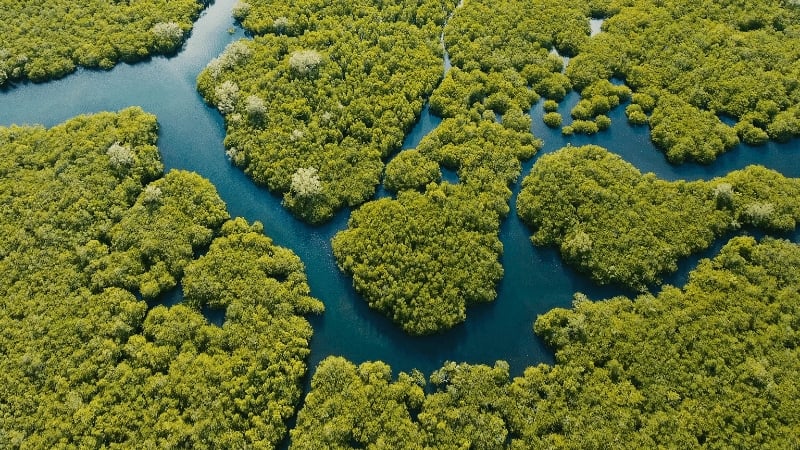
Siargao isn’t only a surfing capital! It’s also a sustainable tourism hotspot blessed with coconut tree plantations and mangrove forests.
That said, it really pays to do your research about a destination before even getting there. Sure, a little spontaneity is cool but being prepared for the activities in store for you in any place makes for twice the fun. How else will you know what to bring or the ideal number of days to stay? Any idea which documents to present for a COVID-free holiday? It’s best to read up.
When visiting areas with indigenous peoples or, say, stricter environmental and COVID-19 regulations, reading up ahead eases the stresses of trip planning. After all, part of sustainability is awareness and preparedness!
Do: Make an effort to learn more about your next Philippine destination before even booking your tickets! Don’t just board your flight clueless. Luckily, the Philippine’s Department of Tourism (DOT) makes it easier for visitors to learn more about the country’s best spots here. Happy browsing!
20. Select your bookings wisely
What’s more, DOT also gives travellers easy access to a wide variety of accredited accommodations, tours, and activities via the all-in-one website, app.philippines.travel. You’ll have the opportunity to look through dreamy tropical escapes — from Ilocos and Bohol to Samal Island in Davao del Norte — in just a few clicks. Plus, you’ll be assured that they all come with the DOT’s seal of approval!
Do: Go for attractions and activities that support sustainable tourism, environmental conservation, and cultural heritage initiatives when you can. Surely, you’ll be spoilt for choice! As they say, our choices make us who we are. Who do you choose to become on your next trip to your dream destination?
We’re pretty sure you’re going to make the right (and safe!) choices as you explore the world once again. The Philippines can’t wait to welcome you! #WakeUpInPH and experience our brand of good, clean fun that travellers can’t get enough of. Truly, #ItsMoreFunInThePhilippines — and it’s high time you find out why.
Kitakits! That’s Filipino slang for “See you soon”!
For more information, please visit app.philippines.travel, philippines.travel/safetrip, and DOT’s official Facebook page.





